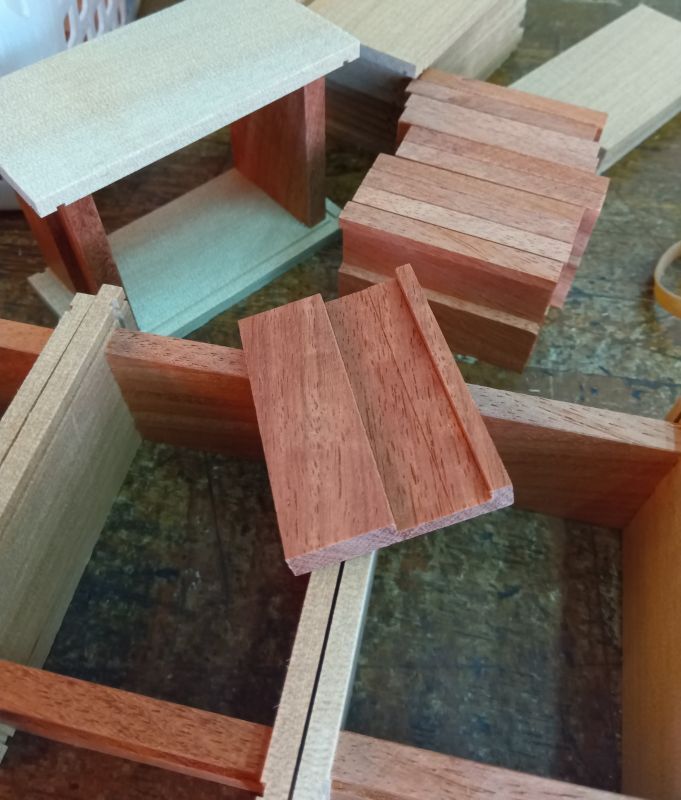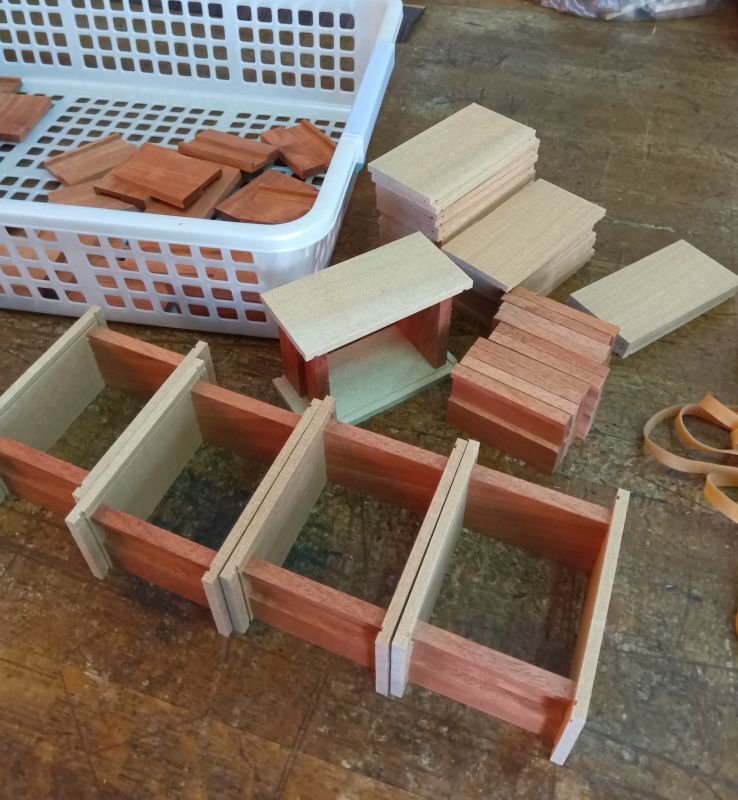Frame of 3 sun box
I have started making the 12 steps 3 sun boxes. This time, I'm making a few Traditional Yosegi type, Walnut wood type, and Ichimatsu type together. Sometimes I make several design types at the same time because I get made-to-order production requests from my customer (retail store owners). The internal mechanism is the same; only the design of the lid panels has changed.
The photo shows the process of making the frame for the 3 sun box. In a way, this is the most important point in making a Japanese puzzle box. The Japanese puzzle box must be an exact rectangle because the mechanism moves in a straight line (vertical and horizontal) on each side. If the frame is crooked or the left and right panels are misaligned, the mechanism will not work properly. Since production involves many different steps, if there is a mistake at this framework point, all the subsequent steps will not go well.
This frame is made of two types of parts (two of each). Usually, these two types are made from the same type of wood (such as Katsura, Magnolia, or Agathis wood), but recently, sometimes I have been using "Karin" wood (Burmese rosewood << maybe) for one of the parts. This is because I have a lot of Karin wood in my workshop. I bought a lot of Karin wood about 15 years ago. Karin is a high-quality wood, but I had no use for it in the production of my works😅. So recently, I have started to use it little by little for the axis part of the box. This part needs to be durable, so Karin wood is very good because it is a very hard wood.
This wood is hard and "fine", so it has the disadvantage that wood glue does not work well. A strong impact can cause the glued part to come off. Therefore, I only use this wood for puzzle boxes with a fixed bottom plate, such as 7 steps, 12 steps, and 14 steps mechanisms. because The bottom plate of these puzzle boxes is fixed with glue, which makes the box even stronger.
The photo shows the process of making the frame for the 3 sun box. In a way, this is the most important point in making a Japanese puzzle box. The Japanese puzzle box must be an exact rectangle because the mechanism moves in a straight line (vertical and horizontal) on each side. If the frame is crooked or the left and right panels are misaligned, the mechanism will not work properly. Since production involves many different steps, if there is a mistake at this framework point, all the subsequent steps will not go well.
This frame is made of two types of parts (two of each). Usually, these two types are made from the same type of wood (such as Katsura, Magnolia, or Agathis wood), but recently, sometimes I have been using "Karin" wood (Burmese rosewood << maybe) for one of the parts. This is because I have a lot of Karin wood in my workshop. I bought a lot of Karin wood about 15 years ago. Karin is a high-quality wood, but I had no use for it in the production of my works😅. So recently, I have started to use it little by little for the axis part of the box. This part needs to be durable, so Karin wood is very good because it is a very hard wood.
This wood is hard and "fine", so it has the disadvantage that wood glue does not work well. A strong impact can cause the glued part to come off. Therefore, I only use this wood for puzzle boxes with a fixed bottom plate, such as 7 steps, 12 steps, and 14 steps mechanisms. because The bottom plate of these puzzle boxes is fixed with glue, which makes the box even stronger.

